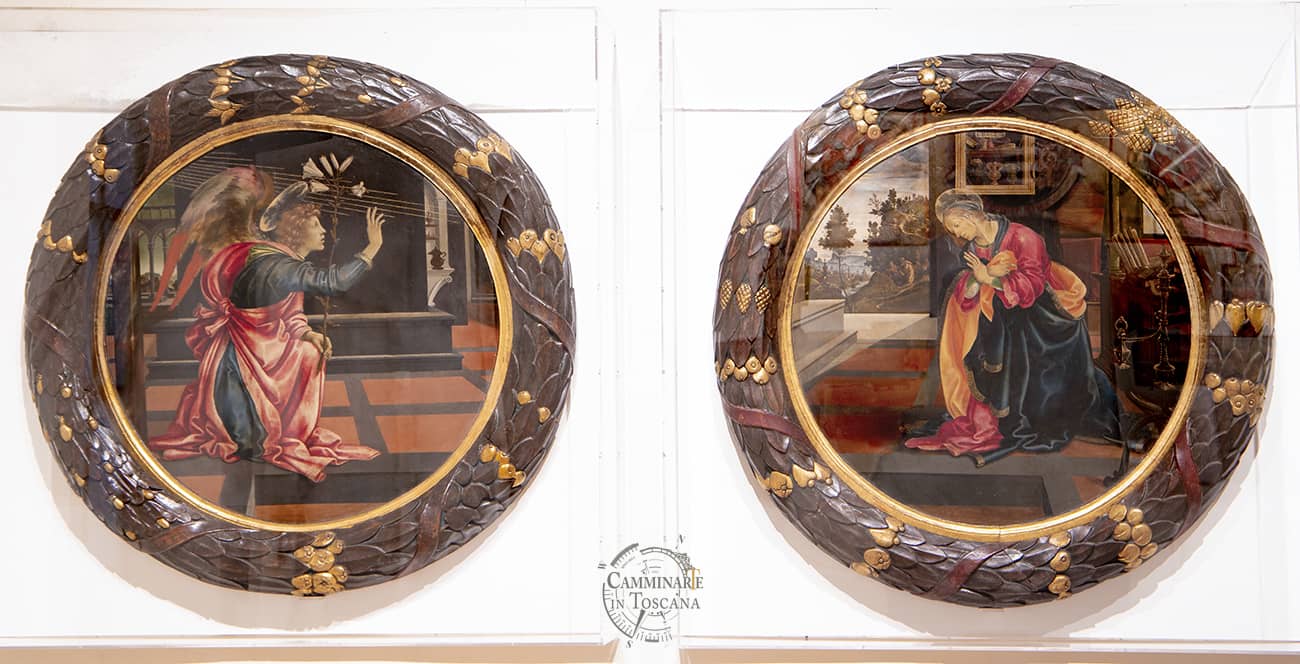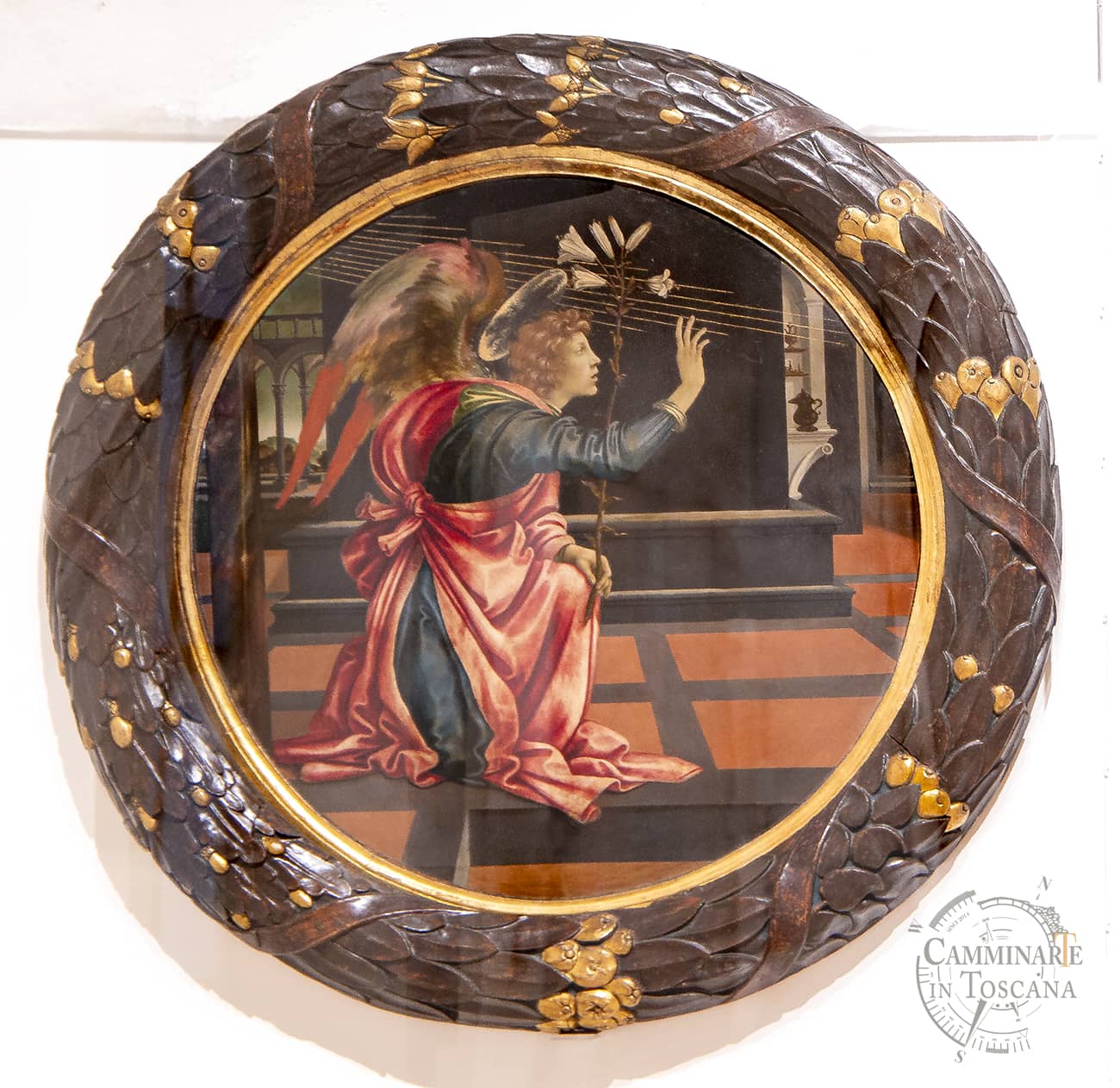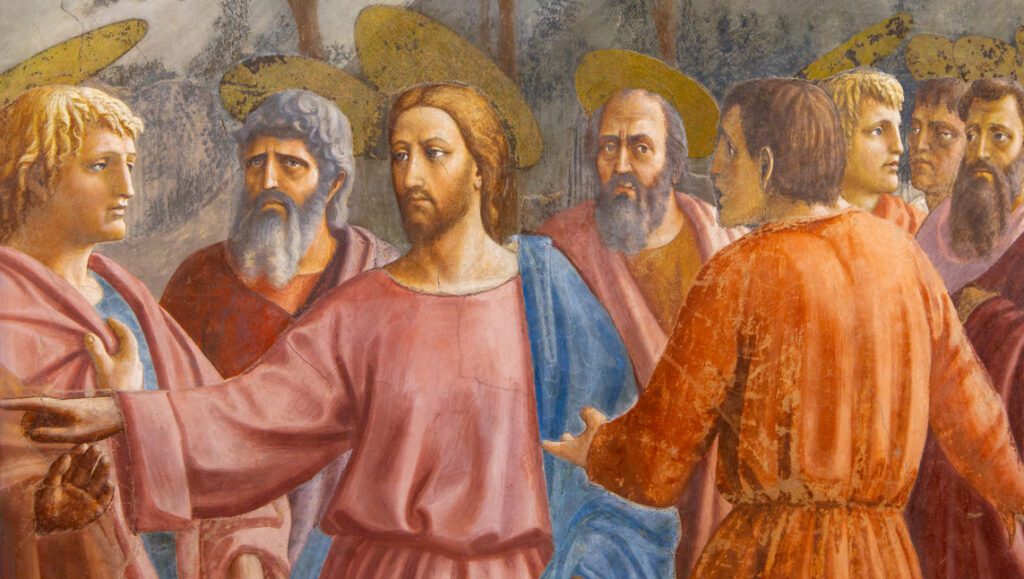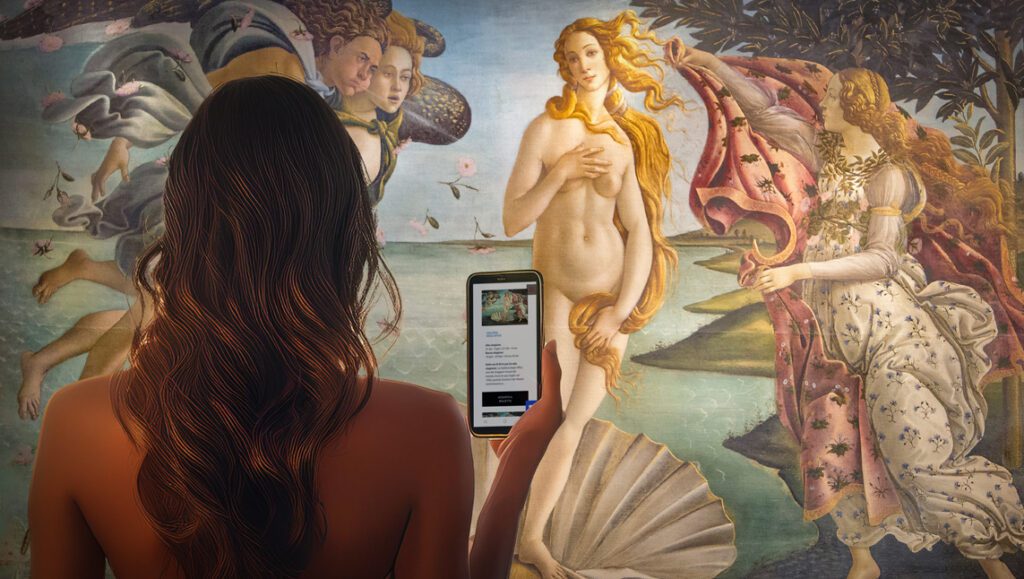
A visit to San Gimignano and its Pinacoteca
When visiting Tuscany, a visit to the village of San Gimignano cannot be ignored. However, the city of towers is much more than the stereotyped image of the “Manatham of the Middle Ages”, as it is usually called.
A UNESCO World Heritage Site, the center of San Gimignano boasts an invaluable artistic heritage, worthy of being known. If you happen to be in the Val d’Elsa center in autumn, it is possible to savor the fresh early autumn wind that blows over the hills of the Val d’Elsa, carrying the aromas of freshly ground grapes behind it.
Therefore, there can’t be a better time than this to go and discover the San Gimignano area, through an itinerary that will take you to know both the artistic beauties, such as through its art gallery.
Detail of the annunciating angel, Annunciation, Filippino Lippi, 1483-84, Pinacoteca, San Gimignano
Coming from the road that leaves the village of Colle Val D’Elsa, the gentle rhythm of the hills at a certain point gives way to what is a vision of other times, an image that comes to us from a distant past but imposes itself in all its concrete grandeur in front of the traveller: the ancient towers of San Gimignano can already be seen from afar for those arriving from the south-east, reflecting a beautiful golden light in the early hours of the morning.
On the south side is the Porta di San Giovanni which allows you to enter this which is one of the most fascinating villages in the world. Visiting San Gimignano on an art itinerary is an essential opportunity to experience the beauty of a renowned centre in Tuscany.
San Gimignano a city of delicious typical products
The city boasts excellent food and wine products, such as Vernaccia, the first Italian wine to have obtained, in 1966, the qualification of DOC wine. In addition to Vernaccia, of which we already know at the time of Dante, San Gimignano is also distinguished by the production of Saffron, a highly appreciated and sought-after spice, even used in the Middle Ages to pay war debts contracted by the Municipality on the occasion of the siege of a castle.
“Once you have crossed Piazza della Cisterna, you will certainly be impressed by the bulk of the Torre Grossa of San Gimignano, the highest in the village with its 54 metres of height.
In Piazza del Duomo there is both the Collegiata – whose sober façade does not suggest to the visitor that precious frescoes of the Sienese school of the fourteenth century are preserved inside the building – and the ancient Palazzo del Comune.
The Annunciation by Filippino Lippi
Inside the latter is located the Civic Museum, divided into various sections, including the beautiful “Sala del Podestà”, decorated with frescoes on the subject of love, and the Pinacoteca, where in this period an interesting exhibition on the Annunciation painted by Filippino Lippi. The work was created in two tondos, both 110 cm in diametre, respectively depicting the Virgin Mary and the announcing Angel.
The two roundels are already part of the collections of the Pinacoteca; the two roundels were the subject of an exhibition curated by Alessandro Cecchi, an important scholar of Florentine painting, who had already taken care of an interesting exhibition in 2011, again on Filippino Lippi, then on display at the Scuderie del Quirinale together with the works of his master Sandro Botticelli .

Detail of the annunciating angel, Annunciation, Filippino Lippi, 1483-84, Pinacoteca, San Gimignano
The exhibition, which took place in 2015, was part of a program to enhance and study the works in the Pinacoteca, a project that was launched in 2014 with the exhibition dedicated to Pinturicchio, with the Altarpiece of the Virgin of the Assumption between Saints Gregory the Great and Blessed.
The exhibition itinerary is enriched by the contract documents for the tondos – the paintings were commissioned from Filippino in 1482 by the Priori and Capitani di parte Guelfa of San Gimignano – and by the loan of some original and facsimile drawings by the artist from Drawings and Prints Department of the Uffizi and which «constitute a precious testimony of that preliminary phase of study from the model which was of fundamental importance in the artistic practice for the Florentine authors and for Filippino Lippi in particular».
A well documented commission
The documents relating to the commission come from the Municipal Historical Archive of San Gimignano. Their inclusion in the exhibition itinerary gives the possibility to follow the various phases of the execution of the work; we are facing one of the few cases in which, through the papers, we can understand the evolution of the work of Filippino Lippi who was asked to make some significant changes to the painting during construction.
Son of the already well-known painter Filippo and of the former nun Lucrezia Buti, Filippino Lippi was a protagonist of Florentine painting in the second half of the fifteenth century, an era characterized by an important stylistic evolution, in some ways also determined by the political crisis and social tensions fueled from the zealous sermons of Girolamo Savonarola.

Detail of the Virgin, Annunciation, Filippino Lippi, 1483-84, Pinacoteca, San Gimignano
After having seen and admired the masterpieces of painting, it will be time to go and discover other masterpieces, those of taste; Leaving the historic center, you leave behind the spectacular profile of the towers to slowly immerse yourself in the green countryside, where the roads you will travel along are flanked by long rows of vineyards. There are several tasting options that you can find in the nearby farmhouses ⟣




